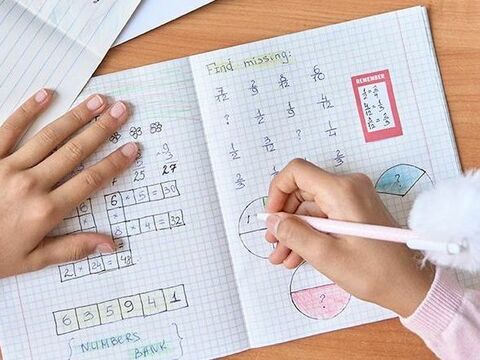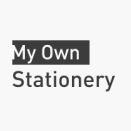
The effectiveness of digital learning in early education has come under increasing scrutiny from institutions like the Karolinska Institute in Sweden, which are raising concerns about digital learning's effectiveness (Guardian). Parallel to this, there has been a recent move by Swedish schools minister Lotta Edholm to reintroduce handwriting in response to concerns about tablets in learning exemplifying the ongoing debate about technology's role in early education. In addition, China has started to scale back on classroom technology, while parents in the tech hub of Silicon Valley in the United States are increasingly choosing tech-free schools for their children.
Denmark's recent decision to invest millions in printed textbooks further underscores this trend. Seven parties in Denmark have signed an agreement on the reform of primary and secondary education, including a substantial allocation increase for acquiring printed textbooks for schools. Similarly, the Swedish government's investment of 55 million euros this year, and additional investments in the following years, signals a shift away from digital learning materials towards printed textbooks, driven by concerns over declining learning outcomes among school children.
Studies confirm traditional methods improve cognitive development, reading comprehension, and fine motor skills (Wollscheid, 2013). But the benefits go deeper, research done by James & Berninger (2019) suggests handwriting activates neural pathways crucial for reading, fostering brain networks essential for literacy development, potentially leading to better reading fluency, idea generation, and information retention (Berninger, cited in Konnikova, 2014). A 2012 study led by Karin James, showed that “Researchers found that the initial duplication process mattered a great deal. When children drew a letter freehand, they exhibited increased activity in three areas of the brain that are activated in adults when they read and write: the left fusiform gyrus, the inferior frontal gyrus and the posterior parietal cortex. By contrast, children who typed or traced the letter or shape showed no such effect. The activation was significantly weaker.” (Konnikova, 2014)
This understanding concurs with the growing concerns about excessive screen time's impact on children's learning. Jo Heywood, former head of Heathfield school in Ascot and a YouGov survey highlight these concerns, revealing potential links between excessive screen time and delayed speech and word comprehension in millions of children in the United Kingdom with further emphasis on the negative impact on speech development. Beyond speech, the decline in handwriting and spelling because of predictive text raises concerns about hindering the crucial learning process of forming letters and mastering spelling. These highlight the potential downsides of neglecting traditional methods like handwriting.
Studies confirm that handwriting strengthens cognitive development, reading comprehension, and fine motor skills (Wollscheid, 2013). But the benefits go deeper. Research suggests handwriting activates neural pathways crucial for reading, fostering brain networks essential for literacy development (James & Berninger, 2019). This can lead to better reading fluency, idea generation, and information retention (Berninger, cited in Konnikova, 2014).
One study led by Karin James showed that children who drew letters freehand exhibited increased activity in brain regions associated with reading and writing, compared to children who typed or traced (Konnikova, 2014). This aligns with concerns about excessive screen time's impact on learning. RHINO Stationery recognizes the importance of handwriting and caters to a wide range of learners. Our handwriting exercise books are designed to improve handwriting skills and confidence in young learners. They feature clear visual guides that act as a roadmap for forming letters with correct proportions and spacing. This scaffolded approach helps children master letter formation, improving handwriting, literacy skills, and confidence levels.
For those experiencing visual stress symptoms often linked to dyslexia, RHINO offers a separate range of tinted paper exercise books and refill pads. Patterns, stripes, and harsh black and white contrasts can be overwhelming, causing headaches, fatigue, and anxiety. For those with visual stress, the environment can appear distorted, with stationary objects blurring, moving, and changing. RHINO's tinted paper exercise books are designed with specific color shades to reduce these symptoms. These books provide valuable support for children with dyslexia, Irlen's syndrome, autism, and other neurodiverse diagnoses. Finding the perfect color tint may require some trial and error, but the potential benefits are significant.
For pre-literate children, James & Engelhardt (2012) observed that their brains recognised even "messy" handwritten letters because the method of "visual learning" helps children understand letters in various forms, allowing them to recognise even imperfect ones. This is because the difference in everyone's handwriting reflects individual letter and word perception. Their study also found that repetitive handwriting contributes to better reading comprehension and language recognition, because of how the brain processes visual information about letters.
A recent study by Professor Sakai (2021) found that subjects recall information 25% faster when writing by hand. He notes that digital devices cannot replicate the unique learning experiences of traditional methods. Unlike the uniform scrolling and standardised layouts of digital tools, physical materials offer varied tangible experiences. This type of experience makes information recall easier, as the brain associates it with the learning experience.
While the world is moving in a direction towards more digital methods this resurgence of interest in traditional methods suggests a recognition of the need for balance between the two. Technology does offer advantages, but it neglects fundamental skills like handwriting. Striking a balance between the two approaches is essential for fostering well-rounded development in young learners.
Under the umbrella of Victor Stationery, RHINO Stationery stands as a distinguished brand, providing an array of educational tools tailored to support students' learning needs. Among its offerings are handwriting exercise books designed to bolster confidence and cultivate writing skills in young learners. Each book features clear visual guides that serve as a roadmap for forming letters with correct proportions and spacing, facilitating the learning journey and enhancing handwriting, literacy skills, and confidence levels. RHIO Stationery also offers Cornell exercise books that offer a unique note-taking approach. Their distinctive layout incorporates dedicated sections for goal-setting and note-taking, which has been shown to promote better comprehension, and retention, and ultimately enhance the learning experience for students.
As well as driving awareness and encouraging open discussions about neurodiversity, Victor Stationery is committed to supporting those with learning differences. This commitment extends to both their RHINO and Aisling Stationery brands, which offer specially designed tinted product ranges to address Dyslexia, Mears-Irlen Syndrome, Dysgraphia, Dyspraxia, and Autism. This range features pastel-coloured, bleed-resistant paper designed to reduce opacity and provide a preferred texture for ease of writing. These considerations are aimed at enhancing precision, accuracy, and engagement in both classroom and office settings, showcasing their commitment to creating inclusive learning environments. One satisfied customer, Jamie, attests to the effectiveness of the product: "Easy to write on. For my dyslexic peers, if you need light blue paper with lines, I would recommend this product! It has helped me immensely throughout college. Many of my friends who struggle with white paper have purchased this and couldn't believe how much it's helped them."
Links:
James, K. & Berninger, V. (2019) Brain Research Shows Why Handwriting Should Be Taught in the Computer Age. LDA Bulletin, 51 (1), 25-30.
Konnikova, M. (2014) What’s Lost as Handwriting Fades. The New York Times, 2 June 2014.
Berninger VW, Abbott RD, Jones J, Wolf BJ, Gould L, Anderson-Youngstrom M, Shimada S, Apel K. Early development of language by hand: composing, reading, listening, and speaking connections; three letter-writing modes; and fast mapping in spelling. Dev Neuropsychol. 2006;29(1):61-92. doi: 10.1207/s15326942dn2901_5. PMID: 16390289.
"Switching off: Sweden says back-to-basics schooling works on paper." The Guardian, 11 Sept. 2023, https://www.theguardian.com/world/2023/sep/11/sweden-says-back-to-basics-schooling-works-on-paper.
Wollscheid, S. (2013). The impact of digital devices vs. Pen(cil) and paper on primary school students' writing skills – A research review. Journal of Educational Psychology, 105(3), 370-379. Retrieved from https://www.sciencedirect.com/science/article/abs/pii/S0360131515300920
James, K., & Engelhardt, L. (2012). The effects of handwriting experience on functional brain development in pre-literate children. Trends in Neuroscience and Education, Volume(Issue), Page range. Retrieved from https://www.sciencedirect.com/science/article/abs/pii/S2211949312000038
Sakai, K. (2021, March 19). Study shows stronger brain activity after writing on paper than on tablet or smartphone. Science News. Retrieved from https://www.sciencedaily.com/releases/2021/03/210319080820.htm
Rigg, D. The Importance of Teaching Handwriting for Cognitive Development. PLD Literacy. Retrieved from https://pld-literacy.org/the-importance-of-teaching-handwriting-for-cognitive-development/
Ansari, S., & Dehaene, S. (2012). The effects of handwriting experience on functional brain development in pre-literate children. Trends in Cognitive Sciences, 16(4), 161-165. https://doi.org/10.1016/j.tine.2012.08.001
Daniel Trotta. (2024, January 27). Shunned in computer age, cursive makes a comeback in California. Reuters. Retrieved from https://www.reuters.com/world/us/shunned-computer-age-cursive-makes-comeback-california-2024-01-27/
Winkleman, S. (January, 2024). Screens in schools are harming our children. Politics Home. Retrieved from https://www.politicshome.com/thehouse/article/screens-schools-harming-children

 Rhino Stationery
Rhino Stationery
 My Own Stationery
My Own Stationery
 Aisling Stationery
Aisling Stationery
 Amazon.co.uk
Amazon.co.uk